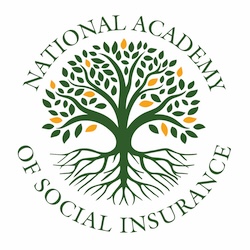Several cost assistance programs currently exist within Medicare. Medicare beneficiaries with low incomes and limited resources may qualify for one of three Medicare Savings Programs to assist with premiums and OOP expenses (Table A-2). The Qualified Medicare Beneficiaries (QMB) program is available to beneficiaries with incomes at or below the federal poverty level (FPL). QMB individuals are entitled to receive assistance for all Medicare Part A and Part B cost-sharing charges (including the Part B premium, all deductibles, and all coinsurance), paid by Medicaid. The Specified Low-Income Medicare Beneficiaries (SLMB) program is available to individuals with income greater than 100 percent but less than 120 percent of FPL. Beneficiaries who qualify for the SLMB program have their Medicare Part B premium paid by Medicaid. The Qualifying Individuals (QI) program is for individuals with an income between 120 percent and 135 percent of FPL. Medicaid pays the Medicare Part B premium for these individuals; however, 100 percent of the payment comes from federal government allocations to states. Funds for the QI program come from the Medicare Supplementary Medical Insurance (SMI) Trust Fund. States may increase their income eligibility limit for the Medicare Savings Programs, allowing more beneficiaries to receive needed financial assistance for Medicare premiums and cost sharing.
Table A-2: Medicare Savings Programs for Dual-Eligible Beneficiaries, 2022
| Program | Monthly income limit | Asset resources limit | Costs paid by Medicaid |
|---|---|---|---|
| Qualified Medicare Beneficiaries | <100% of FPL Single: $1,153 Couple: $1,546 |
Single: $7,730 Couple: $11,600 |
All Part A and Part B premiums, deductibles, and coinsurance |
| Specified Low-Income Medicare Beneficiaries | 100% to <120% of FPL Single: $1,154-$1,379 Couple: $1,546-$1,851 |
Single: $8,400 Couple: $12,600 |
Part B premium |
| Qualifying Individuals | 120% to <135% of FPL Single: $1,379-$1,549 Couple: $1,851-$2,080 |
Single: $8,400 Couple:12.600 |
Part B premium |
Medicare.gov. (2022). Medicare Savings Program. Retrieved from: https://www.medicare.gov/medicare-savings-programs
Medicare Part D also has cost-sharing and premium assistance programs. Medicare Part D provides low-income subsidies (LIS) to certain beneficiaries with limited incomes and resources to help them pay Part D premiums, cost-sharing amounts, and other OOP expenses. Prior to the Inflation Reduction Act (IRA), individuals with incomes up to 135 percent of FPL received full LIS benefits, and those with incomes up to 150 percent of FPL received partial benefits. The IRA will provide full LIS benefits to individuals with incomes up to 150 percent of FPL instead of the partial benefit for people in the 135-150 percent of FPL range. Individuals who receive assistance through an MSP, receive full Medicaid benefits, and/or receive Social Security income cash assistance, are eligible for a full LIS. Eligible enrollees have their monthly premium paid up to a certain benchmark plan amount. Individuals with the full LIS also have no deductible, minimal cost sharing during the initial coverage period and during the coverage gap, and no cost sharing above the catastrophic threshold.
